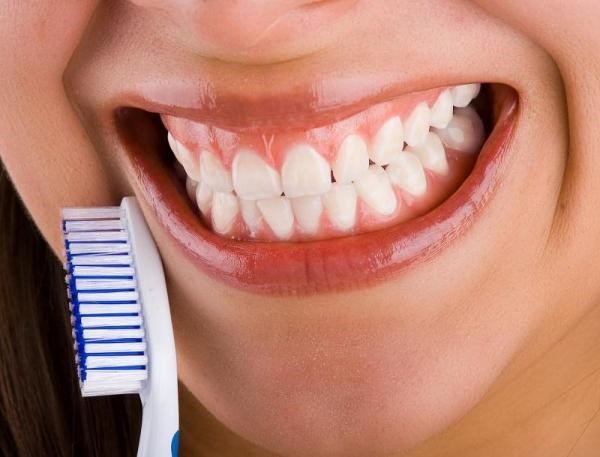Gum disease is easily prevented and treated if detected early. If ignored, gum disease can lead to more serious health issues. Beyond causing painful, swollen, bleeding gums and bad breath, if left untreated, periodontal disease can result in irreversible bone damage and tooth loss. In treatment of gum disease, dentists will use procedures other than regular cleaning to treat the disease. In the early stages of gum disease, most treatment involves non-surgical procedures; however, in more advanced stages, surgical procedures are often required
Gum Surgery
Gum surgery (also known Periodontal surgery) encompasses a variety of sophisticated plastic surgical procedures. These include techniques to repair and regenerate soft (gingival) and hard (bony) tissues and replacement of missing teeth with dental implants. Procedures are usually performed by a periodontal specialist trained in these techniques and in some cases general dentists who have taken advanced training in periodontal surgery. Most procedures are performed with local anesthesia (numbing of the gum/periodontal tissues and teeth), sometimes with the additional use of oral anti-anxiety/sedation medication or intravenous conscious sedation (twilight sleep)
Candidate
Gum surgery is often recommended for patients with bone loss or conditions that do not respond appropriately to soft tissue management therapies. In most cases, patients need to be diagnosed with moderate to severe periodontal disease to warrant the need for surgery.Many patients who undergo scaling and root planning procedures with their dental hygienist or periodontist will also require some surgical intervention to ensure the best prognosis for their oral and dental health.
The goal of any periodontal surgery is to halt the progression of the disease by removing bacteria, calculus (or tartar) that is cuased the disease, and preserving as much jawbone as possible.
Surgical treatments types
There are several types of gum surgeries that your dentist might recommend if you’ve developed gum disease.
Flap Surgery
In Gingival Flap surgery your dentist will lift the gums away and remove the tartar as needed. They will then sew the gums back in position so the tissue fits firmly around the teeth. This procedure also decreases the size of the pocket, giving bacteria less room to grow back.
Curettage
This treatment consists of scraping away unhealthy gum tissue from the infected area and then allowing it to heal.
Bone Grafts
In Bone graftssurgery If your bone has been damaged due to periodontitis, bone grafts will be used to replace it. Small pieces of bone (either your own, donated or synthetic) will be positioned where the original bone was eroded. These grafts work as a platform for the bone to regrow from as well as restoring stability to your teeth.
Soft Tissue Grafts
Soft tissue grafts can be used to fill in gaps where gums have receded or to strength the gums. Grafted tissue is generally removed from the roof of the mouth and then stitched over the affected area.
Guided Tissue Regeneration
This treatment works by stimulating gum tissue and bone growth. Performed along with flap surgery, a little piece of mesh-like fabric is placed in between the gum tissue and the bone. This prevents the gum tissue from growing into the space where the bone needs to be, allowing the bone and its connecting tissue to grow back and properly support the teeth.
Bone (Osseous) Surgery
Advanced or moderate bone loss can often cause shallow craters in the bone. This treatment smooths these craters by reshaping the tooth after flap surgery, making it more difficult for bacteria to accumulate and grow.
Crown Lengthening
During the dental crown lengthening procedure, excess gum and bone tissue is reshaped to expose more of the natural tooth. This can be done to one tooth, to even your gum line, or to several teeth to expose a natural, broad smile.
Your dentist or periodontist may also recommend dental crown lengthening to make a restorative or cosmetic dental procedure possible. Perhaps your tooth is decayed, broken below the gum line, or has insufficient tooth structure for a restoration, such as a crown or bridge. Crown lengthening adjusts the gum and bone level to expose more of the tooth so it can be restored
Surgical Laser Therapy
In periodontal laser therapy , the provider uses a dental laser to access and remove the inflamed gum tissue from around the root of the tooth. When the infected tissue is removed and the root is exposed, the root scaling begins. This involves scraping off the calculus and plaque built up below the gumline and around the root. The dentist then smooths the root with instruments to remove any rough spots that might attract bacteria and cause future infections. The area between the gum and the root can then regenerate during the healing process.
There are ample benefits to using lasers for excising diseased gum tissue:
- No general anesthetic is needed, as is sometimes required for other forms of dental surgery.
- Lasers can target the diseased areas precisely and accurately.
- Bleeding, pain and swelling are limited because periodontal laser therapy is less invasive than regular surgery.
- Recovery and healing times are shorter.
After surgery
After surgery, it is normal for the area to be tender for the first few days ,your doctor may suggest prescription painkillers. Whatever your method of pain relief, be sure to start taking it immediately after surgery.Apply ice packs to to reduce swelling.After the bleeding stops, you can eat soft foods. Stick to a liquid or soft food diet for the first day or two. Examples include soups, yogurts, fruit milkshakes, smoothies and mashed potatoes.If you’ve been given antibiotics, take them as prescribed and make sure you finish the course
Prevention
Here are some tips to help you prevent gum disease:
- Brush, floss and rinse your teeth at least twice a day or after every meal
- Visit your dentist regularly or as often as they recommend
- Avoid sugary foods and drinks, unless eating during a meal
- If you can not brush after eating, use sugar-less chewing gum or rinse your mouth with water
- At the first sign of symptoms, make an appointment with your dentist
- Eat crunchy, healthy foods for snacks, such as apples and carrots
- Talk with your dentist about proper oral hygiene techniques


